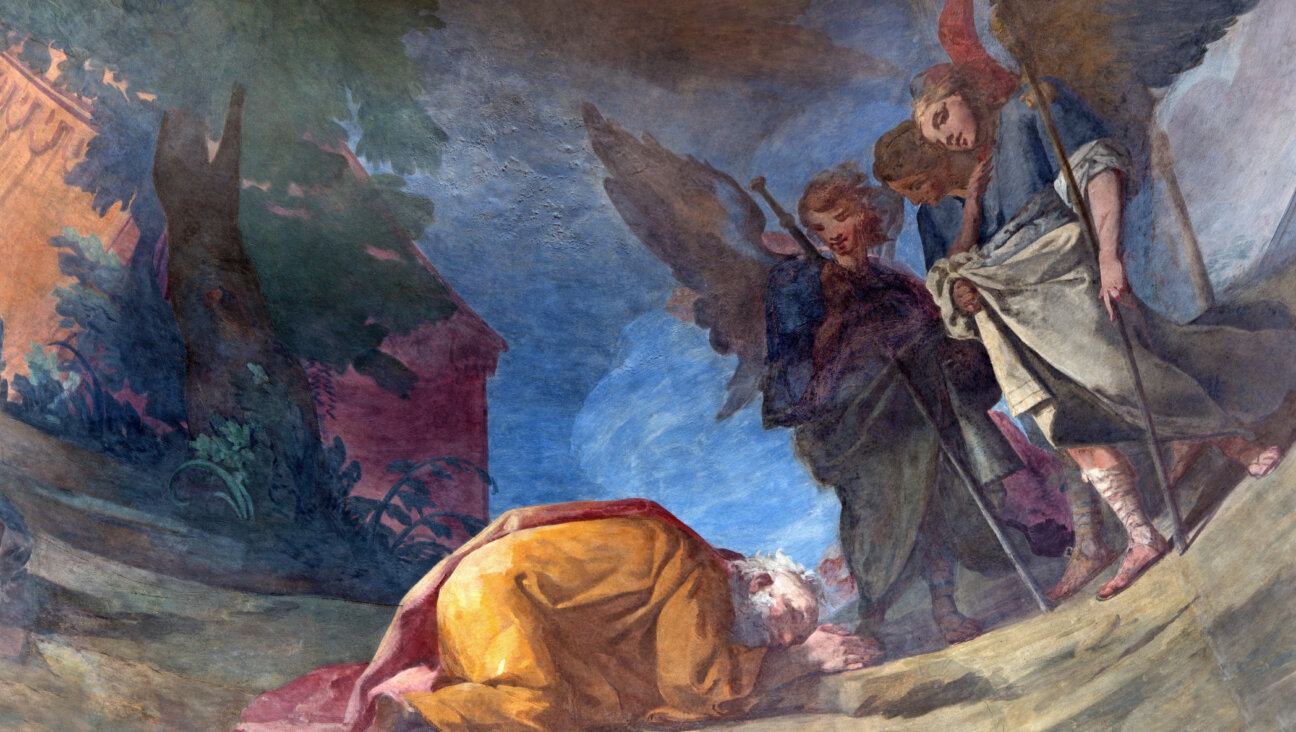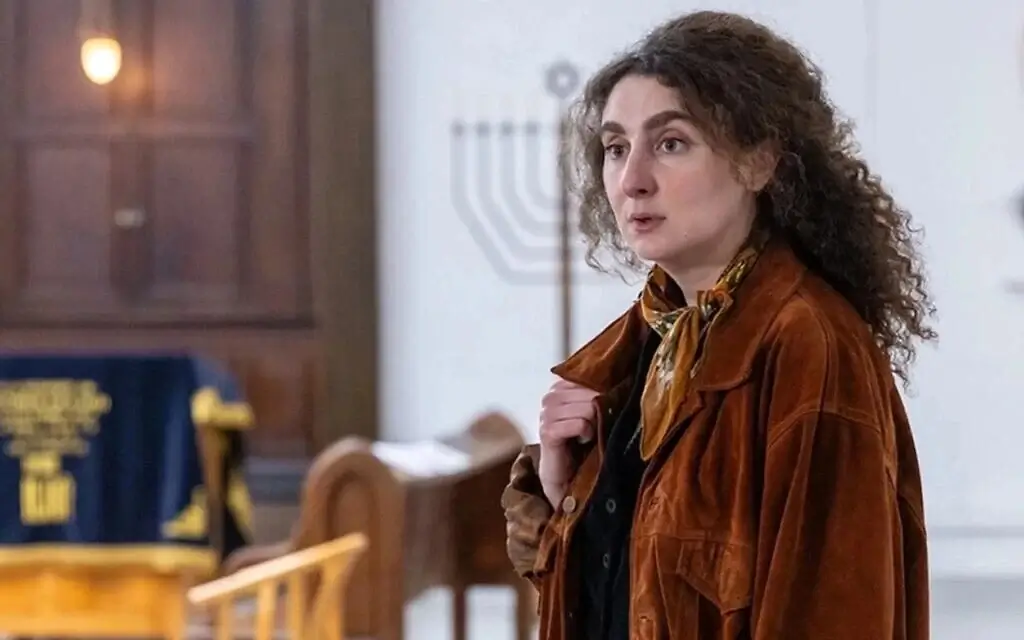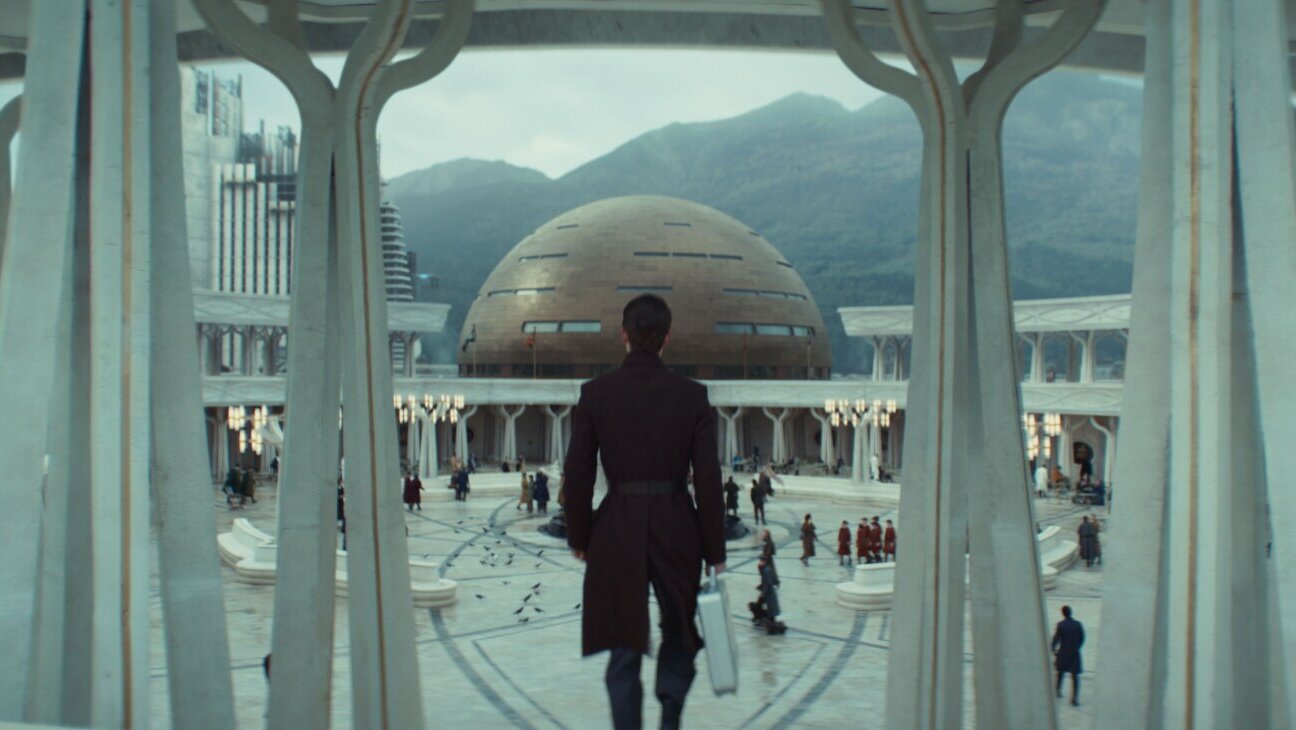Is Jewish Girl Star of Edouard Manet’s Famed Painting ‘The Railway’?

The Girl in the Picture: The woman on the left in Manet?s painting is his favorite model, Victorine Meurent, but the identity of her young companion is less certain. Image by The Art Institute of Chicago
Cast in the major exhibition “Impressionism, Fashion, and Modernity” (through September 29 at the Art Institute of Chicago), certain paintings expose their undergarments, so to speak.
The exhibit, jointly organized with Paris’s Musée d’Orsay and New York’s Metropolitan Museum of Art, where it was shown earlier this year, features a Who’s Who of impressionist painters. One of the better-known paintings, Édouard Manet’s 1873 “The Railway” (National Gallery of Art), bears a particularly compelling enigma. Posed in front of a gate, a girl turns her back to the viewer and stares into the distance, while a young woman reads a book and holds a dog on her lap. The older figure is easily identifiable as Manet’s favorite model, Victorine Meurent, but the identity of her young companion, who wears a white dress with a blue bow, is more controversial.
An entry in the exhibition catalog follows the identification by a dozen or so scholars — including Princeton University’s Philip Nord, Stony Brook University’s James Henry Rubin and Yale University’s Carol Armstrong — of the girl as the daughter of Manet’s friend, Alphonse Hirsch (1843–1884), whose studio was near Manet’s. Hirsch’s daughter gets a name, Suzanne, in the 1987 book “Manet’s Contemplation at the Gare Saint-Lazare” by Harry Rand, a senior curator at the National Museum of American History.
Hirsch was apparently a Jewish painter, although Henry Rubin calls him a “banker,” and art historian Michel Melot refers to Hirsch in his 1996 book “The Impressionist Print” as “an artist but mainly a hanger-on” to Edgar Degas. (Degas was one of several prominent artists who depicted Hirsch in his work.) Hirsch, according to a marginal Jewish Encyclopedia biography, created a portrait of France’s chief rabbi, Lazare Isidor, in 1877.
Art Institute curators referred questions about Hirsch to Juliet Wilson-Bareau, a freelance curator based in London who has published widely on Manet. In her 1998 catalog “Manet and Monet and the Gare Saint-Lazare”, Wilson-Bareau calls Hirsch “a purveyor of agreeable Salon pictures and portraits” and adds in a footnote, “Little appears to have been recorded about the life and career of Alphonse Hirsch.” She adds that nothing is known of a marriage that might support the prominent Manet historian Adolphe Tabarant’s claim that the “Railway” child is Hirsch’s daughter.
In an email to the Forward, Bareau referred to Hirsch’s paintings as “pretty second-rate” and added that “although he must have admired Manet enormously (and was evidently a good friend), he didn’t or couldn’t take the leap into committed, resolutely ‘modern’ art.” Wilson-Bareau says she she believes that Manet’s painting may have been sketched in Hirsch’s studio overlooking his garden.
In the absence of decisive scholarly help, some online sleuthing was necessary to further track the evasive Hirsch. The May 1, 1879, issue of the French Jewish review “Archives Israélites,” published by Isidore Cahen, announced the marriage of Hirsch, the painter of chief rabbi Isidor, to Henriette Perugia. The notice adds that Perugia’s sister was married to Arthur Sassoon of the wealthy Sassoon family.
Perugia appears to have been born in 1855 and to have married Alban Valabreque at some point after Hirsch’s death, although neither that nor any mention of a daughter named Suzanne can be found in the French Jewish publication. This complicates the timeline considerably. Hirsch and Perugia married six or seven years after Manet painted “Railway,” and Suzanne certainly doesn’t look like she is 7 or 8 years old in the painting.
Either Hirsch had a daughter from a previous marriage, whom the wedding announcement neglected to mention — in which case the search for Manet’s young model is back to square one — or the girl in Manet’s painting is not Suzanne Hirsch. Either way, there’s a good deal more to the painting than meets the eye.
Menachem Wecker is a Chicago-based writer on art and religion.
The Forward is free to read, but it isn’t free to produce

I hope you appreciated this article. Before you go, I’d like to ask you to please support the Forward.
Now more than ever, American Jews need independent news they can trust, with reporting driven by truth, not ideology. We serve you, not any ideological agenda.
At a time when other newsrooms are closing or cutting back, the Forward has removed its paywall and invested additional resources to report on the ground from Israel and around the U.S. on the impact of the war, rising antisemitism and polarized discourse.
This is a great time to support independent Jewish journalism you rely on. Make a gift today!
— Rachel Fishman Feddersen, Publisher and CEO
Support our mission to tell the Jewish story fully and fairly.
Most Popular
- 1
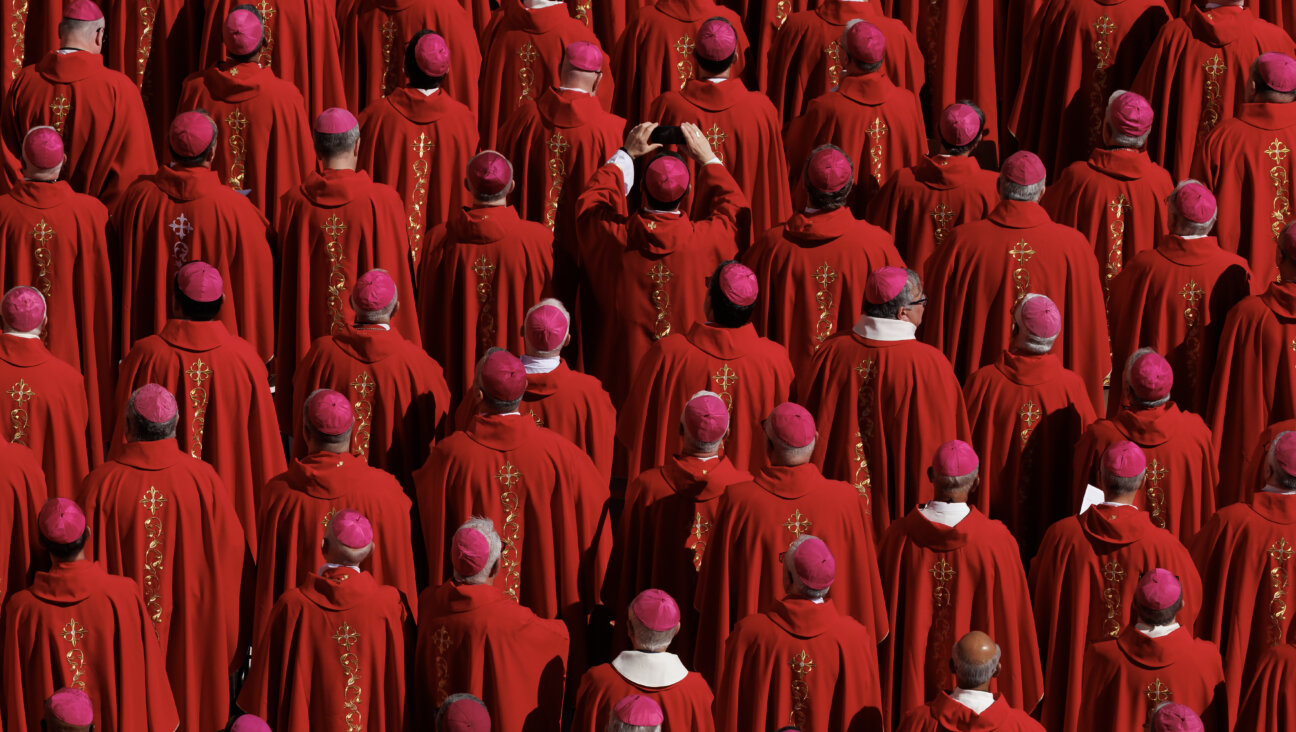
Culture Cardinals are Catholic, not Jewish — so why do they all wear yarmulkes?
- 2

Fast Forward Ye debuts ‘Heil Hitler’ music video that includes a sample of a Hitler speech
- 3

News School Israel trip turns ‘terrifying’ for LA students attacked by Israeli teens
- 4

Fast Forward Student suspended for ‘F— the Jews’ video defends himself on antisemitic podcast
In Case You Missed It
-
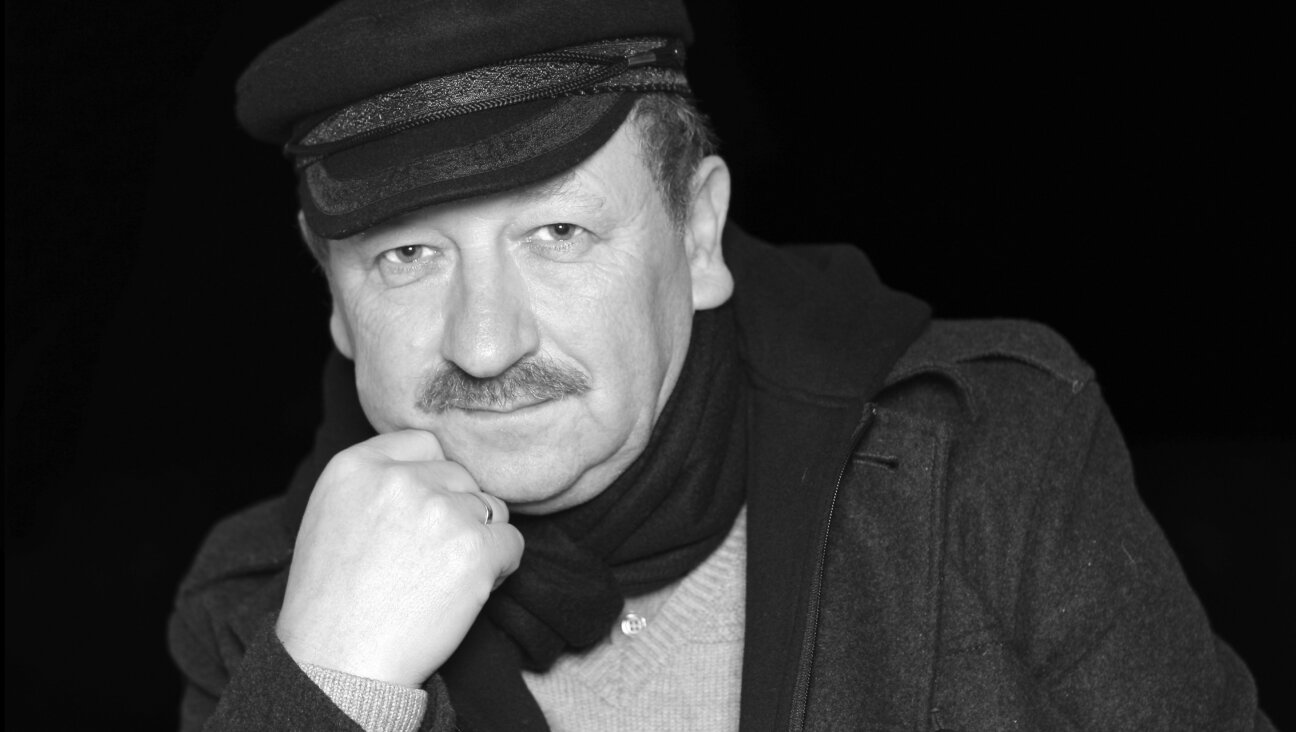
Yiddish קאָנצערט לכּבֿוד דעם ייִדישן שרײַבער און רעדאַקטאָר באָריס סאַנדלערConcert honoring Yiddish writer and editor Boris Sandler
דער בעל־שׂימחה האָט יאָרן לאַנג געדינט ווי דער רעדאַקטאָר פֿונעם ייִדישן פֿאָרווערטס.
-

Fast Forward Trump’s new pick for surgeon general blames the Nazis for pesticides on our food
-

Fast Forward Jewish feud over Trump escalates with open letter in The New York Times
-
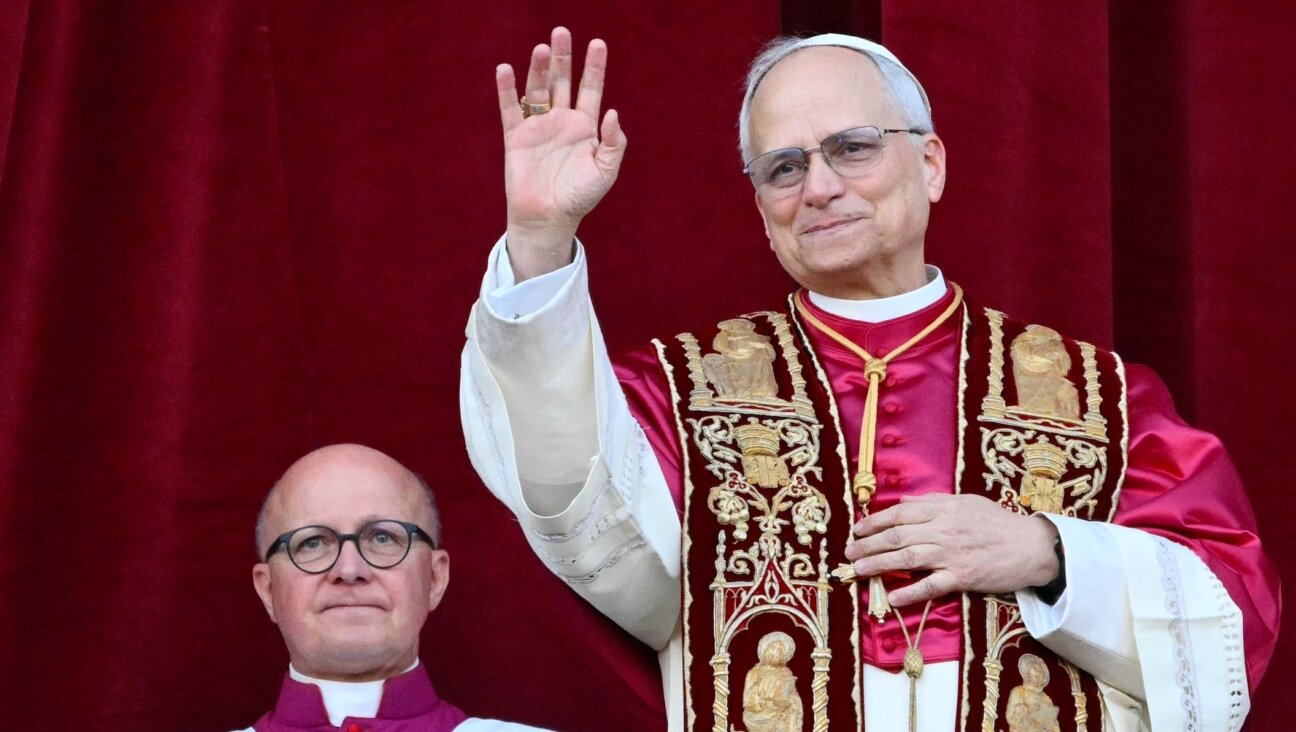
Fast Forward First American pope, Leo XIV, studied under a leader in Jewish-Catholic relations
-
Shop the Forward Store
100% of profits support our journalism
Republish This Story
Please read before republishing
We’re happy to make this story available to republish for free, unless it originated with JTA, Haaretz or another publication (as indicated on the article) and as long as you follow our guidelines.
You must comply with the following:
- Credit the Forward
- Retain our pixel
- Preserve our canonical link in Google search
- Add a noindex tag in Google search
See our full guidelines for more information, and this guide for detail about canonical URLs.
To republish, copy the HTML by clicking on the yellow button to the right; it includes our tracking pixel, all paragraph styles and hyperlinks, the author byline and credit to the Forward. It does not include images; to avoid copyright violations, you must add them manually, following our guidelines. Please email us at [email protected], subject line “republish,” with any questions or to let us know what stories you’re picking up.







